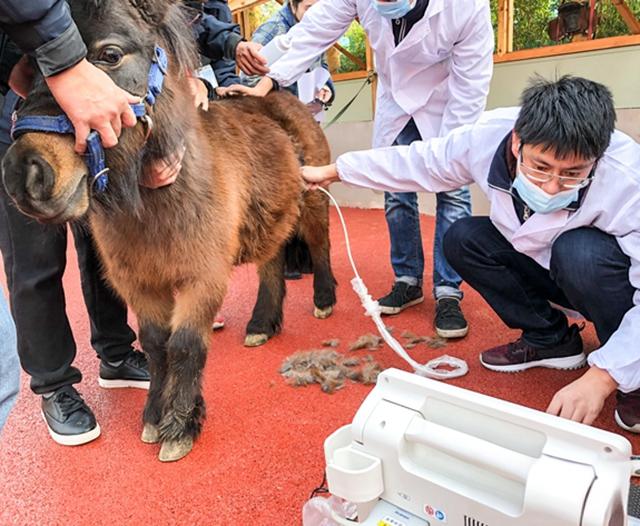The application of Veterinary ultrasound equipment in horse farms is a rapidly developing technology in modern veterinary medicine. Ultrasound equipment forms images through the reflection of sound waves, which can detect soft tissues in different parts and determine the health status of animals. In horse farms, ultrasound equipment can be used for many different applications, helping horse owners and veterinarians diagnose and treat problems, and improving the health and physical fitness of horses. The following will discuss in detail the application of veterinary ultrasound equipment in horse farms.
Portable animal B-ultrasound instrument for measuring horses

1. Using B-ultrasound to detect pregnancy in horses
Ultrasound equipment is commonly used to detect and confirm whether a horse is pregnant. When a horse is pregnant, B-ultrasound equipment can detect the appearance and position of the fetus in the body to determine the pregnancy status. This is very important for breeding horse breeds and horse racing production, as early confirmation and determination of breeding conditions can help horse owners and farm managers adjust their nutrition and exercise plans in a timely manner to ensure the health of both the mother horse and the fetus.
2. Use B-ultrasound to detect bone and soft tissue injuries in horses
Ultrasound equipment is a non-invasive diagnostic and therapeutic technique that can be used on the bones and soft tissues of horses. It can generate images inside the body through ultrasound, helping veterinarians determine the nature and severity of bone and soft tissue injuries in horses, such as muscle strains, tendinitis, or ligament injuries. This technique is very useful because by detecting and diagnosing injuries early, appropriate treatment measures and rehabilitation plans can be taken to restore the horse to a normal state as soon as possible.
3. Use B-ultrasound to detect the condition of the horse's lungs and heart
Ultrasound equipment can also be used to detect the condition of a horse's lungs and heart. In horse racing, the health of the lungs and heart is particularly important. By using ultrasound equipment, lung abnormalities or heart diseases such as cardiomyopathy, myocarditis, or cardiac hypertrophy can be detected. This technology is widely used in horse care and rehabilitation programs.
4. Detection of ovarian or bladder problems in horses using veterinary ultrasound
Animal ultrasound equipment can also detect and determine ovarian or bladder problems in horses. In the racecourse, mares often suffer from ovarian problems due to abnormal hormone secretion, which makes it difficult to guarantee fertility and uterine health. The use of veterinary ultrasound technology in the diagnosis and treatment of mares has been widely applied, which can detect and determine the status of the ovaries to help horse owners and veterinarians develop correct treatment plans.
Veterinary ultrasound technology has become an important diagnostic tool in modern veterinary medicine. In horse farms, the application of veterinary ultrasound equipment is very extensive, not only for pregnancy detection, bone and soft tissue injury detection, but also for lung and heart detection, ovarian and bladder problem detection, etc. By fully utilizing ultrasound technology, horse owners and veterinarians can better protect the health of horses and improve the efficiency of horse racing production and racecourse management.
tags: Veterinary B-ultrasoundveterinary ultrasound equipmentanimal B-ultrasound


